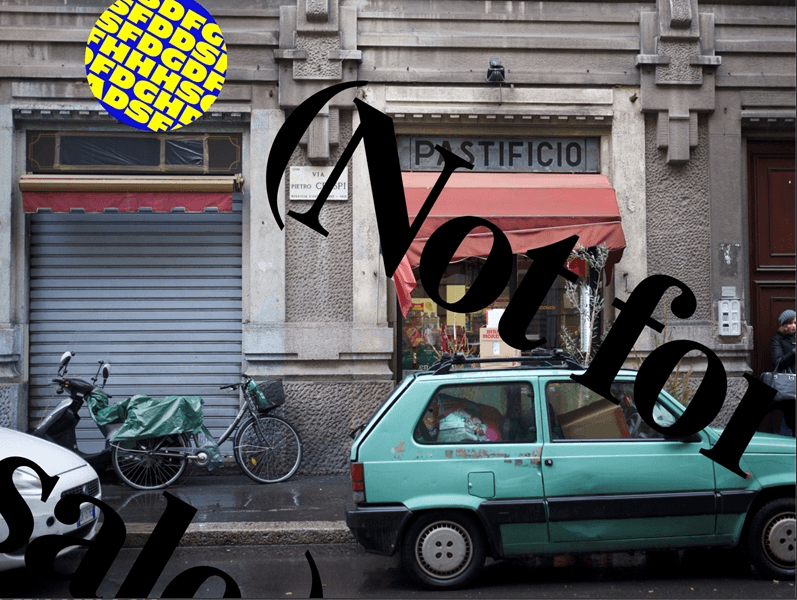
The world’s biggest design event, the Salone del Mobile in Milan, starts this week. And just like last year, the Design Academy Eindhoven will be there. A delegation of twelve recent graduates present themselves amidst a typical Milanese urban setting, under the name NOT FOR SALE.
Via Pietro Crespi
NOT FOR SALE is a place to explore and re-evaluate the meaning of design behind our complex, continuously evolving culture – and what can and cannot be bought or sold. A spectacle that questions the various activities, implications and alternative definitions of design. This bold mise en scene is fully embedded in the daily life on the Via Pietro Crespi, at a stone’s throw from the Stazione Centrale di Milano.
Via Pietro Crespi represents a slice of everyday Italian life, with a pharmacy, hardware store, newspaper stand, a church, food market, internet café and osteria. Everyday people come here to buy their newspaper, grab an espresso or shop for food. At first sight, you will see a thriving exchange system. A micro-society built around transactions of services, goods and currency. Against this burgeoning background, the locals have developed a deep-rooted culture of creativity, idiosyncrasy and ingenuity. Each venue boasts its own curiosities: the local bar is the first gay bar in the area, the internet café doubles as a shelter to refugees, the market hosts raves at night, and the hardware store displays a collection of not-for-sale baseball caps.
Installations by DAE alumni
Yes, design provides us with the building blocks of a society — commodities such as a pizza plate, the newspaper, the screwdriver or the coffee pot. What really make a place, though, is how these things come together. NOT FOR SALE merges organically with the street’s fabric, spanning from the former Osteria Crespi, revived by the Design Academy for the Salone del Mobile, through Mercato Comunale Monza, the famous covered market, to Piazza Morbegno.
Graduates from each of DAE’s eight bachelor’s departments and four master’s departments present stimulating site-specific design projects. Martina Huynh’s interactive Basic Income Café – located at Osteria Crespi – invites you to experience the economical principles behind two basic income scenarios — a complex system made tangible by means of the flow of coffee.
While the displaced human worker performs The Last Job on Earth, hinting at our future careers as interpreters for computers, you are served a freshly brewed drink by SAM, a self-owning soda-making machine designed by Marie Caye and Arvid Jense in the Mercato Comunale Monza.
Donghwan Kam’s After-Photography, in the Anaesthesia nightclub, freezes time to look back at iconic moments of contemporary mass media through the virtual reality of Second Life. And these are only a few of the twelve installations along Via Crespi to be discovered.
NOT FOR SALE is curated by Joseph Grima and Tamar Shafrir. Grima is the new creative director of the DAE. Shafrir is a mentor in the DAE master’s programme. The presentation is open for visitors from 17 – 22 April.



